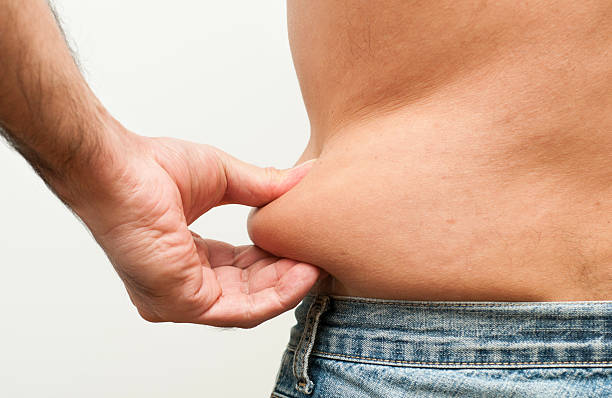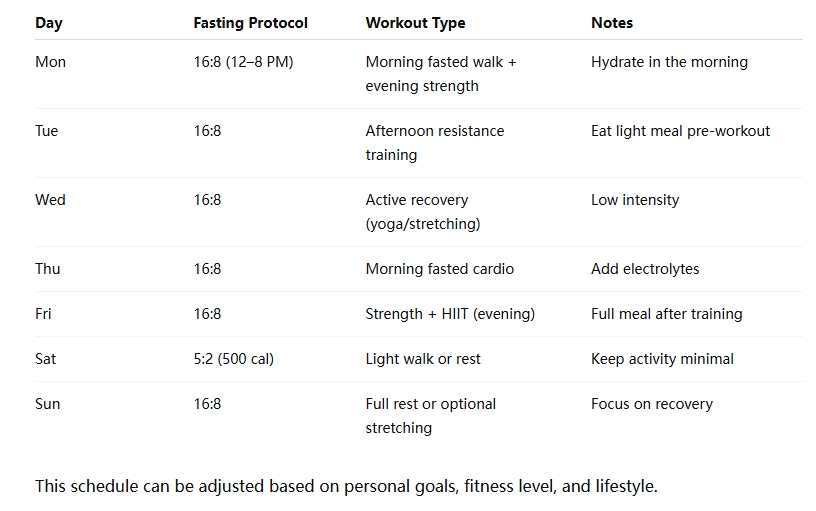Intermittent Fasting and Exercise: Burn Fat Smarter
The Power of Intermittent Fasting and Exercise Intermittent fasting (IF) has become a widely adopted approach for weight management and fat loss. When paired with the right exercise routine, it can amplify fat-burning effects, boost metabolism, and enhance overall health. This combination appeals to individuals seeking a sustainable and science-backed strategy to shed fat without extreme diets or overtraining.
1. The Science Behind Intermittent Fasting
What Is Intermittent Fasting?
Intermittent fasting is an eating pattern that cycles between periods of eating and fasting. Popular protocols include the 16:8 method (16 hours fasting, 8 hours eating window), the 5:2 diet (eating normally five days a week, restricting calories on two), and alternate-day fasting.
How IF Supports Fat Loss
- Increases insulin sensitivity: Lower insulin levels during fasting help the body tap into fat stores.
- Enhances hormone function: Fasting boosts norepinephrine and growth hormone, both of which promote fat breakdown.
- Simplifies calorie control: Fewer eating windows often lead to reduced caloric intake without conscious restriction.
- Triggers metabolic switching: The body shifts from glucose to fat as its primary fuel source, encouraging fat oxidation.
Intermittent fasting is not a crash diet but a metabolic strategy that promotes long-term fat reduction and improved metabolic health.
2. Exercise During Fasting: Key Safety Tips
Working out in a fasted state can accelerate fat loss—but it must be done smartly. Here are key safety guidelines to maximize benefits without risking fatigue, dizziness, or muscle loss.
Listen to Your Body
Some people feel energized during fasted workouts; others may feel weak. Adjust intensity based on how you feel. If you're new to fasting or exercising in a fasted state, start slowly.
Stay Hydrated
Fasting can lead to dehydration, especially if combined with morning workouts. Drink water throughout your fasting window. Adding electrolytes can help maintain balance, especially during sweat-heavy sessions.
Avoid High-Intensity Workouts Initially
High-intensity interval training (HIIT) or heavy lifting while fasting may be too taxing for beginners. Start with moderate cardio or low-impact strength training, then gradually build up.
Time Your Meals Around Training
- If you train fasted: Have a protein-rich meal post-workout to support recovery and muscle synthesis.
- If you prefer training fed: Schedule your workout at the beginning of your eating window.
Proper meal timing helps preserve lean muscle mass while still promoting fat loss.
3. Best Types of Workouts to Combine with Fasting
Different workouts yield different results when combined with fasting. Here’s how to align your training with your fasting schedule:
Morning Fasted Workouts
Ideal for: Cardio, yoga, walking, light strength training Why it works: Insulin levels are low, making it easier for your body to burn fat as fuel.
Tips:
- Keep intensity low to moderate.
- Limit duration to 30–45 minutes initially.
- Drink water before and after.
Midday or Evening Workouts (During Eating Window)
Ideal for: Strength training, HIIT, endurance training Why it works: Muscles are fueled by food, reducing risk of fatigue or injury.
Tips:
- Eat a small meal or snack 1–2 hours before exercise.
- Prioritize protein and carbs for performance and recovery.
Resistance Training and Fasting
Combining resistance training with intermittent fasting can preserve or even build muscle while losing fat—provided you consume enough protein and calories during your eating window.
Focus on:
- Compound lifts (squats, deadlifts, bench press)
- Progressive overload
- Proper rest and recovery
4. Sample Intermittent Fasting + Workout Schedule
Here’s a basic weekly plan for combining intermittent fasting with training:
Conclusion: Sustainable Fat Loss Through Strategy, Not Struggle
Combining intermittent fasting with appropriate exercise isn't about punishing your body—it's about aligning your biology with movement. This approach helps optimize fat loss, enhance energy, and create sustainable habits that last.
Whether you're just beginning or refining your fitness journey, the synergy between fasting and exercise can offer powerful, long-term results—when done safely and intentionally.

